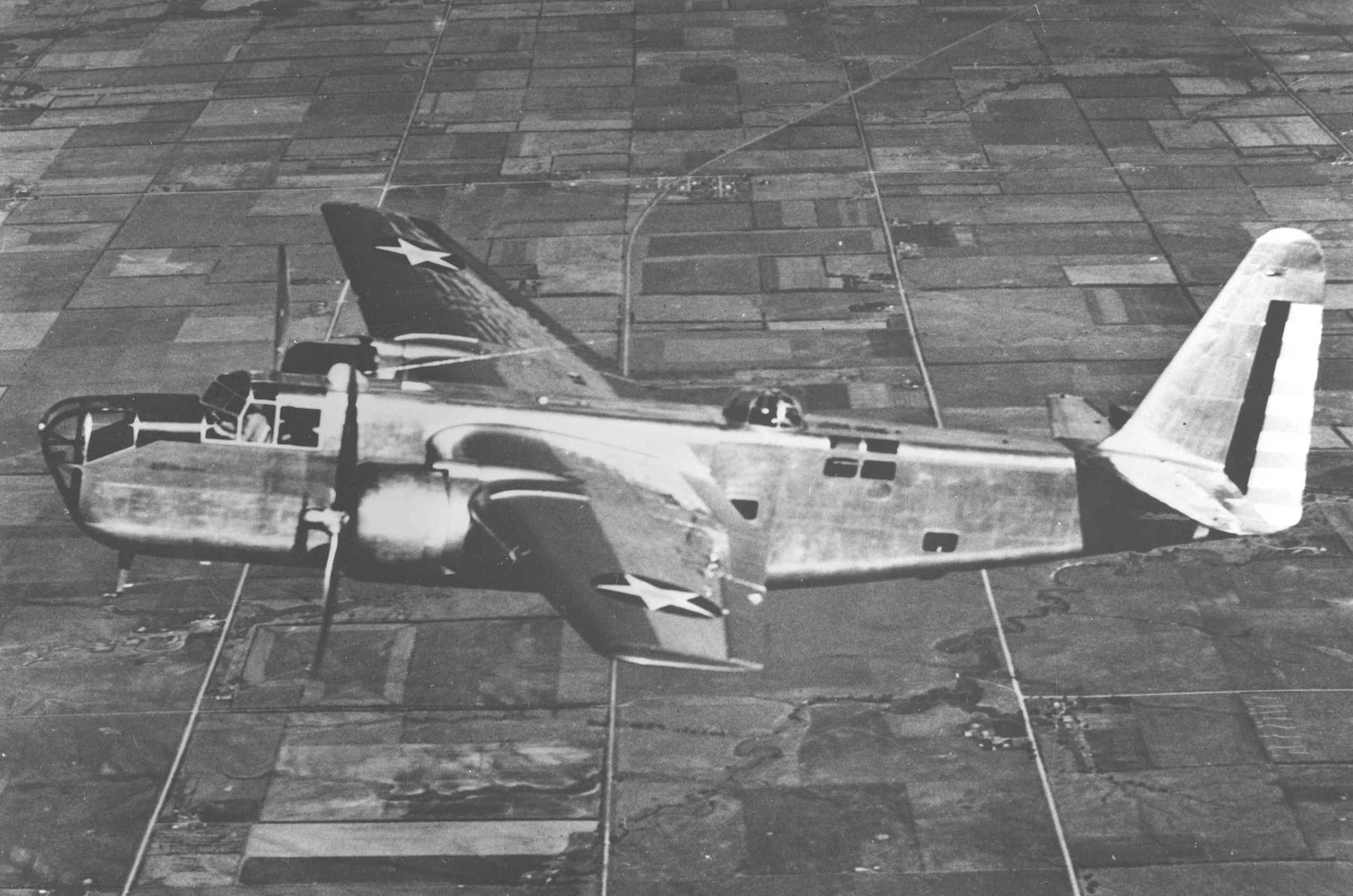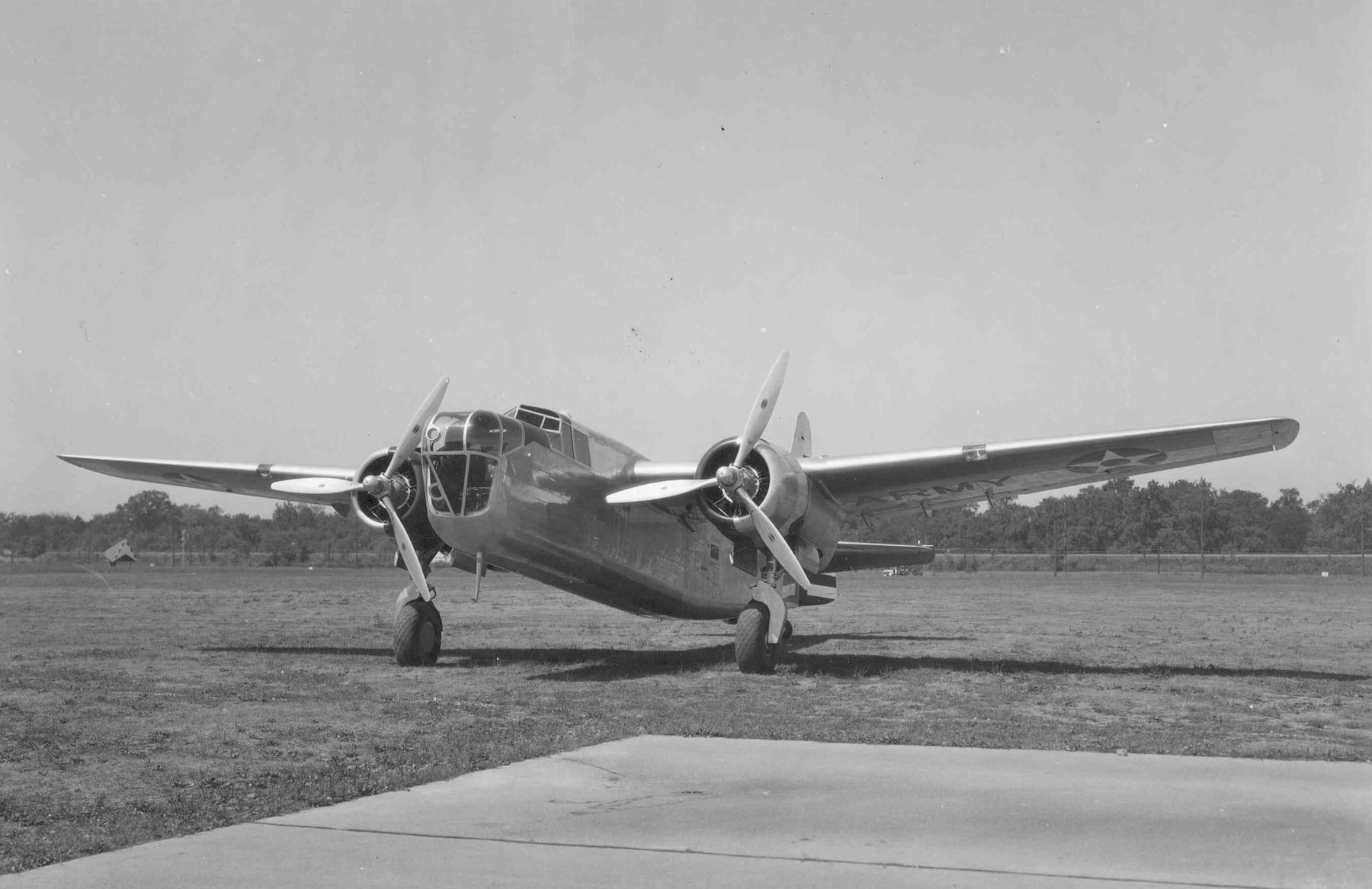Stearman XA-21 on:
[Wikipedia]
[Google]
[Amazon]
The Stearman XA-21 (Model X-100) was a competitor in a
Museum of the United States Air Force. Retrieved: 17 July 2017. Its initial design featured an unusual "
"Swift Attack Bombers Race For Jobs In Army Air Corps."
''Popular Mechanics,'' June 1939. Although this change in the cockpit did not significantly affect performance, the XA-21 was not ordered into production.' The sole XA-21 had serial number ''40-191''.


"Stearman XA-21"
{{USAF attack aircraft A-21, Stearman A-21 Shoulder-wing aircraft Aircraft first flown in 1938 Twin piston-engined tractor aircraft
United States Army Air Corps
The United States Army Air Corps (USAAC) was the aerial warfare service component of the United States Army between 1926 and 1941. After World War I, as early aviation became an increasingly important part of modern warfare, a philosophical ri ...
competition for a twin-engined attack aircraft which (after redesigns) led to the Douglas A-20 Havoc
The Douglas A-20 Havoc (company designation DB-7) is an American light bomber, attack aircraft, Intruder (air combat), night intruder, night fighter, and reconnaissance aircraft of World War II.
Designed to meet an Army Air Corps requirement for ...
, Martin A-22 Maryland and North American B-25 Mitchell
The North American B-25 Mitchell is an American medium bomber that was introduced in 1941 and named in honor of Brigadier General Billy Mitchell, William "Billy" Mitchell, a pioneer of U.S. military aviation. Used by many Allies of World War ...
.
Design and development
The X-100, designated XA-21 following purchase by the Army Air Corps, was a twin-engined high-wingedmonoplane
A monoplane is a fixed-wing aircraft configuration with a single mainplane, in contrast to a biplane or other types of multiplanes, which have multiple wings.
A monoplane has inherently the highest efficiency and lowest drag of any wing con ...
of all-metal construction."Stearman XA-21 (Stepped Cockpit)."Museum of the United States Air Force. Retrieved: 17 July 2017. Its initial design featured an unusual "
stepless cockpit
In aircraft design, a stepless cockpit means that the nose of the aircraft has no separate "windscreen" panels directly in front of the pilot's or co-pilot's seating positions, and generally has no "breaks" in the nose contour – curved or other ...
" arrangement, much like those on most German World War II
World War II or the Second World War (1 September 1939 – 2 September 1945) was a World war, global conflict between two coalitions: the Allies of World War II, Allies and the Axis powers. World War II by country, Nearly all of the wo ...
bombers designed during the war years from the He 111P onwards, with a streamlined, well-framed greenhouse
A greenhouse is a structure that is designed to regulate the temperature and humidity of the environment inside. There are different types of greenhouses, but they all have large areas covered with transparent materials that let sunlight pass an ...
canopy enclosing both the pilot and bombardier stations.Bowers 1989, p. 273.
Operational history
The XA-21 was first tested with the streamlined cockpit but this configuration was found to restrict the pilot's forward vision, and the aircraft was rebuilt with a conventional (stepped) nose and cockpit structure.''Popular Mechanics,'' June 1939. Although this change in the cockpit did not significantly affect performance, the XA-21 was not ordered into production.' The sole XA-21 had serial number ''40-191''.
Operators
; *United States Army Air Corps
The United States Army Air Corps (USAAC) was the aerial warfare service component of the United States Army between 1926 and 1941. After World War I, as early aviation became an increasingly important part of modern warfare, a philosophical ri ...
Specifications (XA-21)


See also
References
Notes
Bibliography
* Bowers, Peter M. ''Boeing Aircraft since 1916''. London: Putnam, Second edition, 1989. . * Wagner, Ray. ''American Combat Planes of the 20th Century, Third Enlarged Edition.'' New York: Doubleday, 1982. .External links
"Stearman XA-21"
{{USAF attack aircraft A-21, Stearman A-21 Shoulder-wing aircraft Aircraft first flown in 1938 Twin piston-engined tractor aircraft